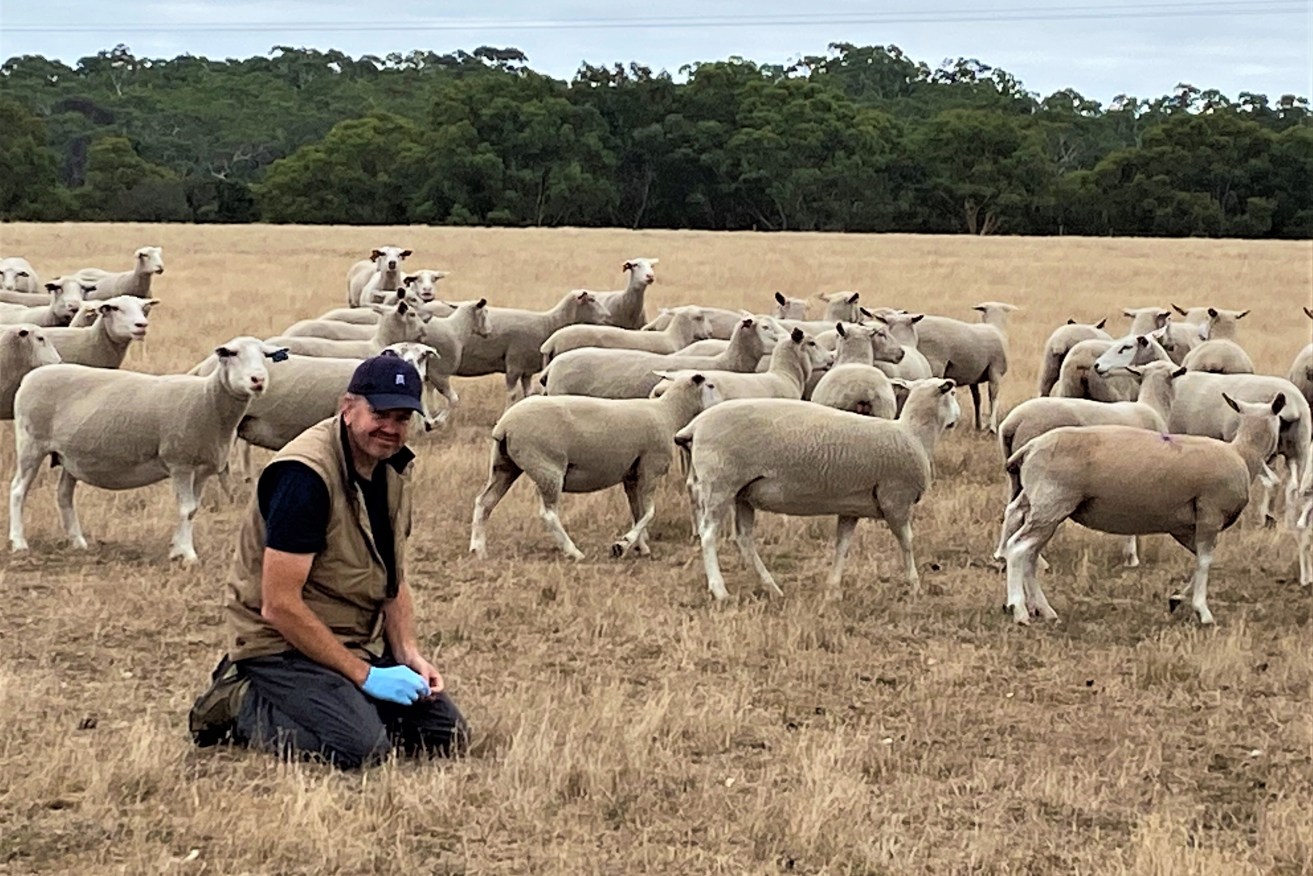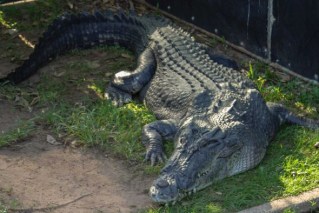What sort of mess would world be without dung beetles? We’re about to find out
Flood-hit communities will see an influx of flies this summer after millions of dung beetles were wiped out.

A supplied image obtained on Monday, June 26, 2023, of scientist Russ Barrow inspecting sheep pellets for dung beetles at Summit Park Stud near Hamilton, Victoria in 2021. Areas impacted by flooding have recorded mass dung beetle kills, with scientists concerned it will mean more flies and disease this summer. (AAP Image/Supplied by Graeme Heath) NO ARCHIVING, EDITORIAL USE ONLY
Scientific monitoring across southern parts of Australia showed complete beetle annihilation in some areas.
Russ Barrow from the Gulbali Institute, which conducts agricultural and environmental research, likened it to mass fish kills.
“The lack of dung beetles caused by the waterlogging and inundation of vast areas is almost certainly going to lead to an increase in fly numbers this summer,” Dr Barrow said.
“The flies then start spreading bacteria and you’ll get massive breeding populations of flies because the dung is on the surface and not being taken down under the ground.”
Dr Barrow said where the water lay on the ground and inundated the soil, the dung beetles drowned.
The beetles are considered integral to farming ecosystems, burying animal manure and producing fertiliser, while playing a role in minimising livestock disease.
“They remove the breeding ground for flies and parasites such as worms, which impact cattle and sheep,” Dr Barrow said.
Roger Reid farms 4200 hectares near Deniliquin in southern NSW where some of the monitoring took place.
In October, his property received a huge deluge of rain.
“There would have been 800 to 900 hectares of country that went underwater,” he said.
“We had water for months on the ground – nothing is going to survive under that for that period of time.”
Mr Reid said the number of beetles was down significantly compared to the year before.
“One of the problems we have for cattle is a thing called pinkeye,” he said.
“Flies spread those, so the less flies around, the better.”
While scientists are predicting an increase in flies and disease in flood-impacted areas, it’s not only farmers who will notice a difference.
“If you have higher input costs because you’re going out and buying more chemicals to drench your sheep and cattle, or buy more ointment to put on the eyes, that’s all going to be passed on to the consumer,” Dr Barrow said.
The results were collected as part of a monitoring program that ran for five years and winds up at the end of this month.
Dr Barrow said discontinuing the scheme would make it difficult to measure the impact of dung beetle kills.
“It will be hard to assess the impact of the floods and to communicate that with the producers going forward,” he said.












